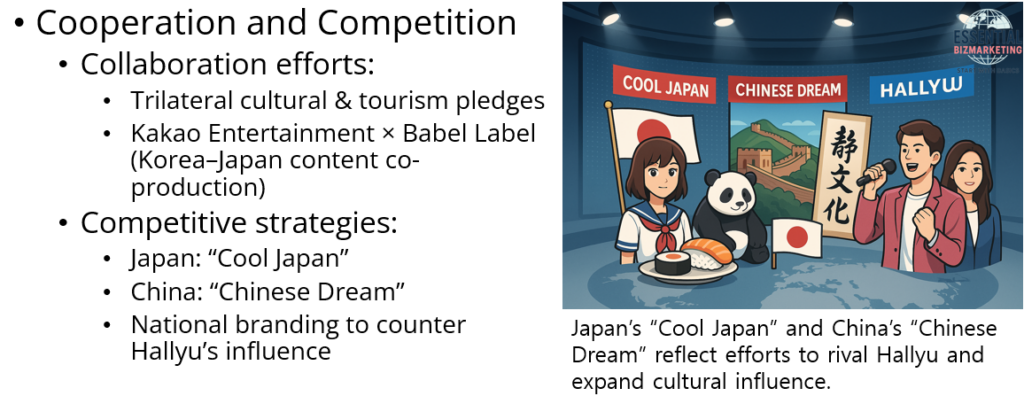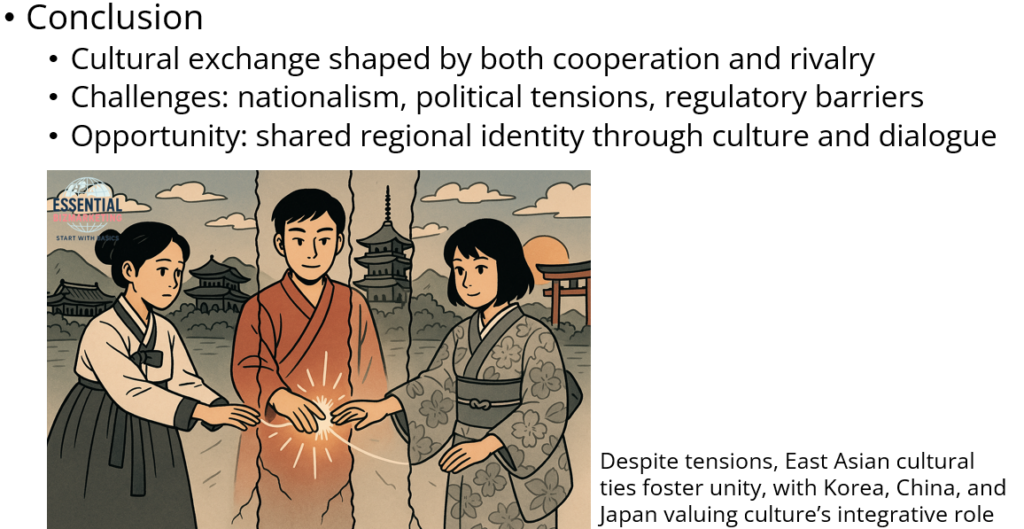Introduction: The Rise of Hallyu in East Asia

The Korean Wave, or Hallyu, refers to the global proliferation of South Korean culture, encompassing music, television dramas, films, and fashion. Since the late 1990s, Hallyu has gained substantial traction in East Asia, particularly in China and Japan, leading to both collaborative ventures and competitive dynamics among these nations.
Hallyu’s Impact in China and Japan
In China, Korean pop culture has garnered a massive following, with K-pop and Korean dramas becoming cultural staples. However, this surge has occasionally met resistance, exemplified by the emergence of the “anti-Hallyu” movement within certain Chinese online communities. This movement reflects underlying tensions and a desire to protect domestic cultural industries.
Similarly, Japan has experienced waves of Hallyu enthusiasm, with Korean artists achieving significant popularity. Despite historical and political tensions, cultural exchanges have persisted, indicating the influential role of Hallyu in fostering people-to-people connections.
Collaborative Cultural Initiatives

Recognizing the potential of cultural diplomacy, South Korea, China, and Japan have engaged in joint initiatives to promote regional harmony. For instance, the culture and tourism ministers of the three countries pledged to build peace in East Asia by strengthening cultural links and expanding youth exchange programs.
Furthermore, collaborations in the entertainment sector have flourished. A notable example is the partnership between South Korea’s Kakao Entertainment and Japan’s Babel Label to co-develop series and films, aiming to globalize traditionally localized content and broaden audience reach.
Competitive Dynamics and Cultural Policies
Despite collaborative efforts, competition remains evident as each nation seeks to bolster its cultural influence. Japan’s “Cool Japan” strategy and China’s promotion of the “Chinese Dream” exemplify governmental endeavors to enhance soft power and counterbalance Hallyu’s dominance. These policies aim to project national culture globally and compete in the international cultural arena.
Challenges and Opportunities in Cultural Exchange
Cultural collaborations face challenges, including geopolitical tensions and nationalistic sentiments, which can impede joint ventures and mutual appreciation. However, such collaborations also present opportunities to bridge divides, foster mutual understanding, and create a cohesive East Asian cultural identity. The ongoing dialogue among South Korea, China, and Japan underscores a shared recognition of culture’s role in regional integration.
Conclusion: Navigating the Interplay of Cooperation and Competition

The interplay between cooperation and competition in the cultural spheres of South Korea, China, and Japan highlights the complex dynamics of East Asian relations. While Hallyu has been a catalyst for cultural exchange, it has also prompted protective measures and competitive strategies. Moving forward, balancing national interests with collaborative opportunities will be crucial in leveraging cultural diplomacy for regional harmony.
📚 References
Chen, L. (2017). The emergence of the anti-Hallyu movement in China. Media, Culture & Society, 39(3), 374–390. https://journals.sagepub.com/doi/10.1177/0163443716646176
Korea.net. (2019). Korea, China, Japan pledge to bring peace to East Asia via culture. https://www.korea.net/NewsFocus/Culture/view?articleId=174808
Martin Roll. (n.d.). Korean Wave (Hallyu) – The Rise of Korea’s Cultural Economy & Pop Culture. https://martinroll.com/resources/articles/asia/korean-wave-hallyu-the-rise-of-koreas-cultural-economy-pop-culture/
Wang, L. (2023). How Has the ‘Korean Wave’ Impacted Japan-South Korea Relations? The Diplomat. https://thediplomat.com/2023/01/how-has-the-korean-wave-impacted-japan-south-korea-relations/
Yum, Y., & Shim, D. (2016). Chinese Dream, Cool Japan, and the Korean Wave: “Gangnam Style” and the Soft Power of East Asian Countries among Young Adults in the US Heartland. Asian Communication Research, 13(1), 107–130. https://www.researchgate.net/publication/314242250_Chinese_Dream_Cool_Japan_and_the_Korean_Wave_Gangnam_Style_and_the_Soft_Power_of_East_Asian_Countries_among_Young_Adults_in_the_US_Heartland
📁 Start exploring the Blog
📘 Or learn more About this site
🧵 Or follow along on X (Twitter)
🔎 Looking for sharp perspectives on global trade and markets?
I recommend @GONOGO_Korea as a resource I trust and regularly learn from.
